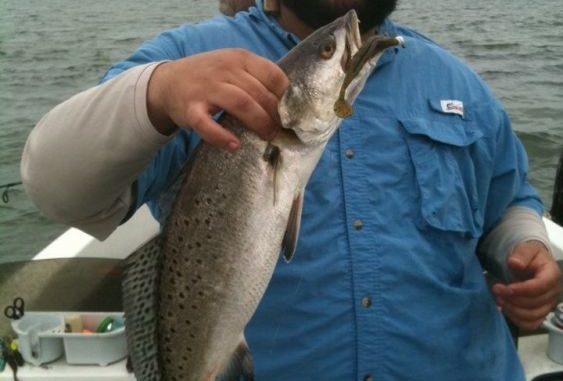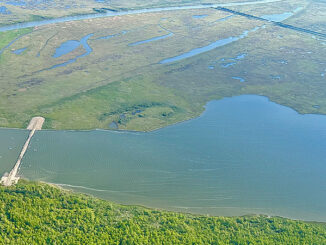
Head outside to find unpressured specks
Pull up to the boat launch with 50 other anglers targeting speckled trout on a hot August morning, and you’d be lucky to find a dozen who were targeting specks inside the marsh.
On the contrary, load up at that same marina in the middle of November, and you’d be hard pressed to find many angler planning to head outside.
After all, why would you pass up fish five minutes from the launch?
But Chris Macaluso doesn’t mind the lack of boats fishing outside in November a bit.
That’s because the avid angler finds big speckled trout in the big bays this time of year — something a lot of people don’t do.
“On the days when you can get out there, I really like to hit the open water,” Macaluso said.
He doesn’t necessarily fish the summertime, outside structures, but he does run out farther than most this time of year.
“I don’t fish wellheads or rigs,” Macaluso said. “I concentrate on reefs, rock piles, debris and rock jetties.”
Shells are often key for finding speckled trout. Baitfish and shrimp have no choice but to get noticed by predatory fish, as they can’t bury down in the mud.
Macaluso said that’s one of the things he targets this time of year.
“There will be fish on the oyster reefs on relatively warm days when the water temperatures are in the 60s or so,” he said. “It depends on how cold the water gets as to where the fish are going to be.”
When targeting rocks and rock jetties, Macaluso looks for baitfish, and said the fish can be more active.
“The mullet will be around those rocks,” he said. “A lot of times if you find rock piles or shallower reefs, those areas will warm up quicker.”
It might seem odd to run outside for specks in November, but the rewards are well worth the petroleum, according to Macaluso.
“The fact is some trout don’t ever come back in the marsh,” he said. “Some fish even stay out in areas people would call summertime locations.
“A lot of times, there are bigger fish out there, too.”
Macaluso changes his lure selection based on the forage in the water.
“Early in the fall, the fish are still eating shrimp, but when the water temperatures get cooler, they switch over to mullet,” he said.
To mimic that forage, Macaluso throws big soft plastics and a variety of jerkbaits, suck as Bomber Long A’s and Rapala Shad Raps.
“I want the jerkbait to be about 3 feet below the surface,” he said.
One of the biggest keys to success is timing your trips around fronts. Picking a day on the calendar a month in advance isn’t a good idea because of how moody weather conditions are this time of year.
“Usually if you can wait four days after the front passes, the water is going to be warmer, saltier and cleaner,” he said.


